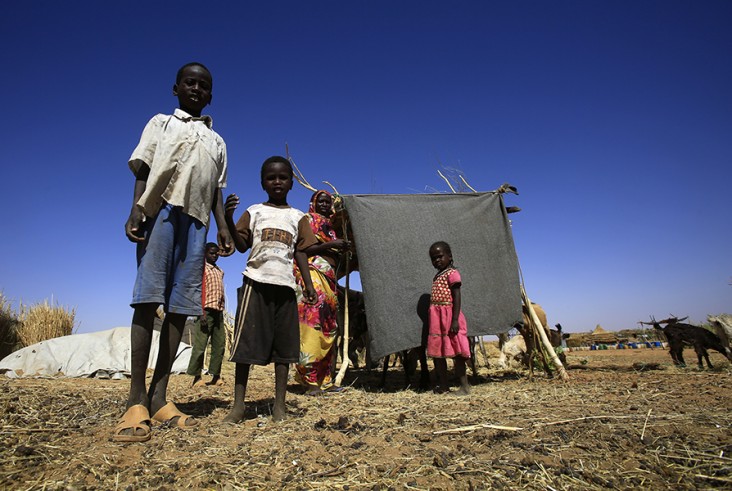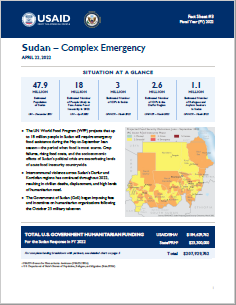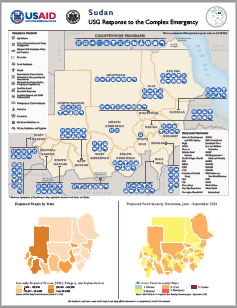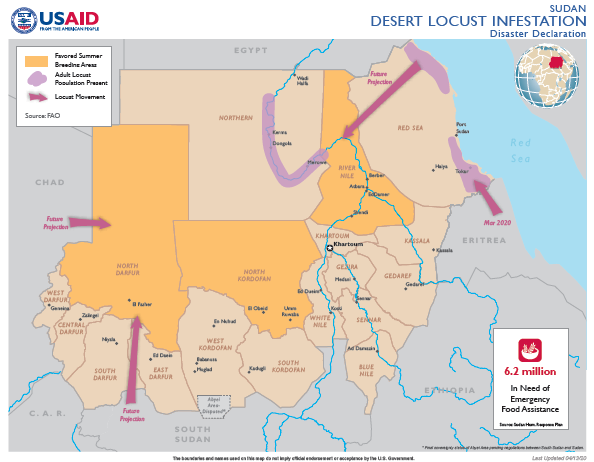- What We Do
- A New Roadmap to Health and a TB Diagnostic Test Help Improve Health Outcomes
- Agriculture and Food Security
- Anti-Corruption
- Climate Change
- Democracy, Human Rights, and Governance
- Economic Growth and Trade
- Education
- Environment, Energy, and Infrastructure
- Explore USAID’s New Storytelling Hub – Extreme Possibilities
- Gender Equality and Women's Empowerment
- Global Health
- Humanitarian Assistance
- Innovation, Technology, and Research
- Legal and Policy Requirements
- Nutrition
- Social and Behavior Change
- The Demographic and Health Surveys Program
- Water and Sanitation
- Working in Crises and Conflict
Speeches Shim

Latest Sudan Fact Sheet
Key Developments
The UN World Food Program projects that up to 18 million people in Sudan will require emergency food assistance during the May-to-September lean season—the period when food is most scarce. Crop failures, rising food costs, and the socioeconomic effects of Sudan’s political crisis are exacerbating levels of acute food insecurity countrywide.
Intercommunal violence across Sudan's Darfur and Kordofan regions has continued throughout 2022, resulting in civilian deaths, displacement, and high levels of humanitarian need.
The Government of Sudan began imposing fees and incentives on humanitarian organizations following the October 25 military takeover.
Background
Sudan continues to cope with the effects of conflict, economic shocks, and recurrent environmental hazards, such as drought and flooding, resulting in 5.5 million in need of humanitarian assistance. This includes 1.7 million internally displaced persons (IDPs) in Darfur, 235,000 IDPs in the government controlled parts of the Two Areas of South Kordofan and Blue Nile states, and up to 545,000 IDPs residing in locations in the Two Areas that are not under government control. USAID is addressing the acute and protracted needs of conflict-affected populations in Sudan by prioritizing integrated activities in health, nutrition, and water, sanitation, and hygiene. The United States has declared a disaster in Sudan each year since 1987 due to the ongoing complex emergency. As the largest international donor of humanitarian assistance in Sudan, the United States continues to provide impartial, needs-based assistance to vulnerable and conflict-affected populations.
Last updated: April 25, 2022




Comment
Make a general inquiry or suggest an improvement.